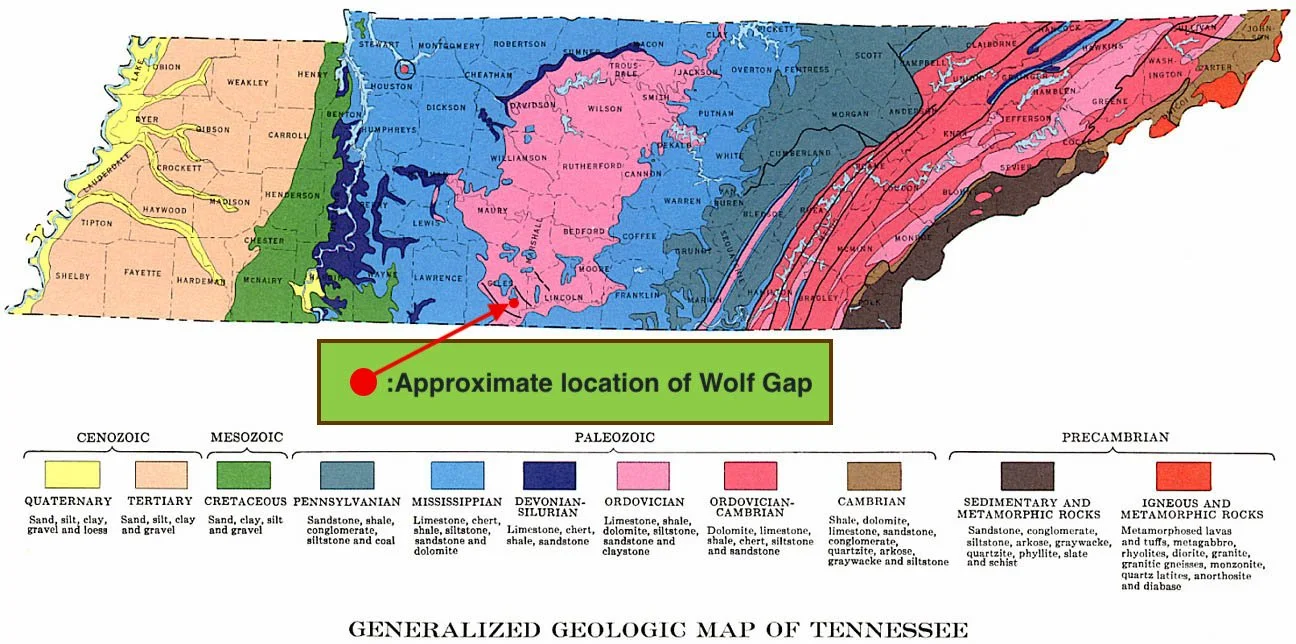Geology of Wolf Gap
Giles County is characterized by a rough terrain of high winding ridges and deep meandering valleys, the result of the county’s position in relation to south-central Tennessee’s distinct areas of physical geography.
The county lies within three main topographic divisions: the Highland Rim, the Central Basin, and the terraces and bottomlands along the Elk River and Richland Creek, the two main water sources. Giles county mostly falls within the Central Basin, but it extends into both the eastern and western parts of the Highland Rim as well.
Wolf Gap is situated along the southern boundary of the Outer Basin and the Highland Rim and has views of the beautiful hills and valleys the area is known for.
Along Birdsong Branch, the creek that runs through Wolf Gap, limestone bedrock is exposed to reveal many crinoid stem and bivalve fossils.
There are minor limestone outcroppings on the hillside among some Cedar Glades which will be made accessible to the public in the future.
Important Terms:
Karst : Karst is an area of land made up of limestone. Karst landscapes feature caves, underground streams and sinkholes on the surface. Limestone, also known as chalk or calcium carbonate, is a soft rock that dissolves in water. (https://www.nationalgeographic.org/encyclopedia/karst/)
Limestone : Limestone is a sedimentary rock composed primarily of calcite, a calcium carbonate mineral with a chemical composition of CaCO3. It usually forms in clear, calm, warm, shallow marine waters. (https://geology.com/rocks/limestone.shtml)
Topography : the physical or natural features of an area,
Crinoid stem: Crinoids are echinoderms related to starfish, sea urchins, and brittle stars. Crinoids can very basically be described as upside-down starfish with a stems. Today, approximately 600 living species are known; most free-living feather stars or comatulids living in the shallow seas. About 80 species of stalked sea lilies are restricted to the deeper water of today`s ocean. (http://www.fossilcrinoids.com)
Brachiopods : Brachiopods are a type of mollusk and resemble something like an oyster or a clam. The oldest brachiopods can be found in rocks of early Cambrian age (about 530 million years old). They are still alive today. (https://samnoblemuseum.ou.edu/common-fossils-of-oklahoma/invertebrate-fossils/brachiopods/)
Other Resources


